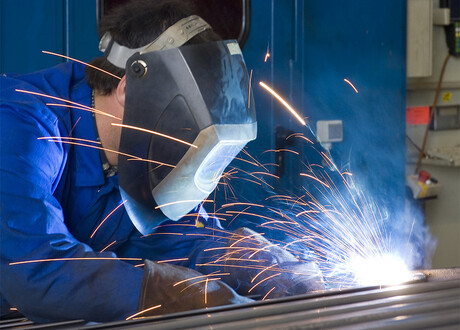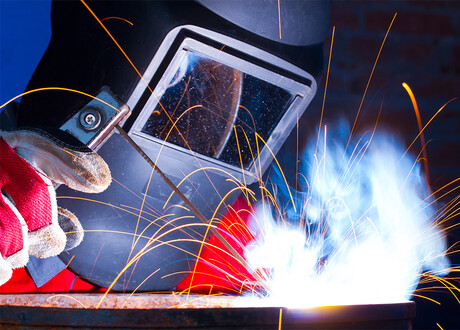Welding fumes contain oxides of the metals in the materials being welded. If not protected by personal protection equipment and proper ventilation measures, a welder and his surrounding are exposed to several health risks by the oxides of the metals.
The risks are caused by different compositions of fluxes, which can lead to physical complaints and serious diseases.
A few examples of different compositions of welding fumes are:
- Fluxes containing silica or fluoride produce amorphous silica, metallic silicates and fluoride fumes.
- Fumes from mild steel welding contain mostly iron with small amounts of additive metals (chromium, nickel, manganese, molybdenum, vanadium, titanium, cobalt, copper etc.).
- Stainless steels have larger amounts of chromium or nickel in the fume and smaller amounts of iron.
- Nickel alloys have much more nickel in the fume and very little iron.
Ingredients in coatings
These fumes are in themselves dangerous for welders working without protection and ventilation. However, the fumes can be even more dangerous when a coated metal or a metal with residues is being welded. Some ingredients in coatings can have toxic effects. These ingredients include:
- Metal working fluids, oils and rust inhibitors.
- Zinc on galvanized steel (vaporizes to produce zinc oxide fume).
- Cadmium plating.
- Vapors from paints and solvents.
- Lead oxide primer paints.
- Some plastic coatings.
Best: first remove the coatings
All these ‘extra’ ingredients mix with very fine particles of metallic oxides, fluorides and metals. These particles remain in the air for several hours. Centers for occupational health and safety all over the world strongly advise to clean the air during and after the welding process. They also strongly advise to remove coatings and residues before you start welding. These are some of their tips:
- Remove coatings from the weld area to minimize the fume. The removal of coating will also improve the weld quality.
- Use stripping products to remove coatings. Make sure to remove any residues before welding.
- Use wet slurry vacuum removal techniques for removing very toxic coatings.
- Do not grind coatings. Grinding dust may be toxic.
Welding fumes
Welding fumes are a complex mixture of metallic oxides, silicates and fluorides. Fumes are formed when a metal is heated above its boiling point and its vapors condense into very fine, particles (solid particulates). Welding fumes generally contain particles from the electrode and the material that is being welded. The composition of welding fumes varies.





